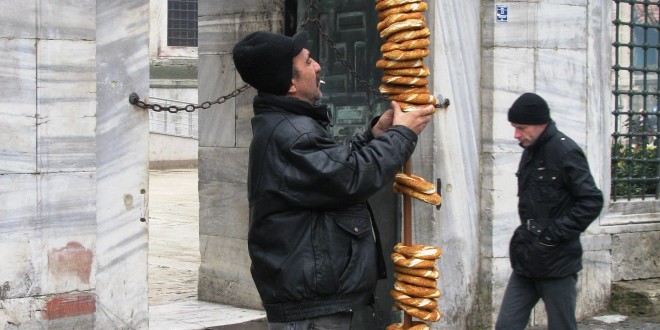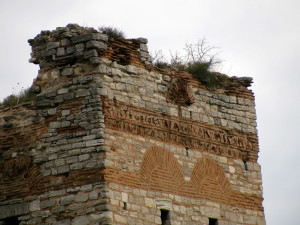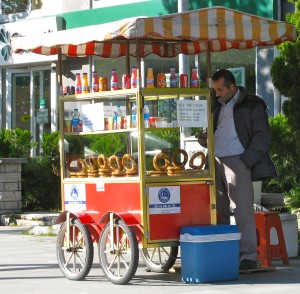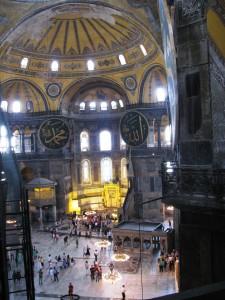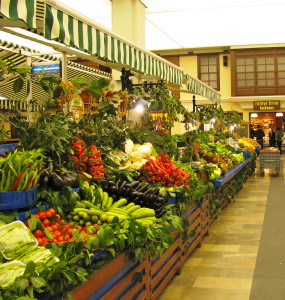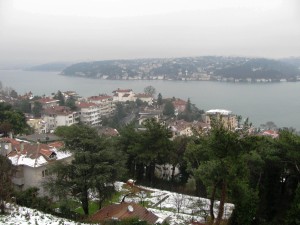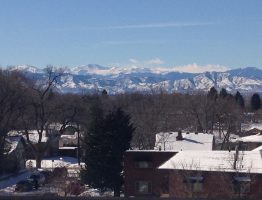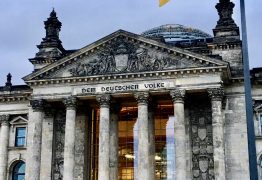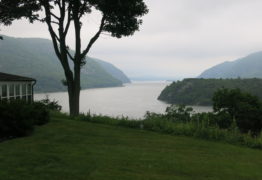This is an excerpt from my upcoming memoir. . .
The wings of the plane tilted, and with it, my stomach. I stared out the window and saw a jigsaw puzzle of land and water. Turkey has about 5,000 miles of coastline; I had located the Aegean, Mediterranean and Black Sea on a map back home. Now, a bird’s eye view confirmed how water-bound Istanbul itself was.
The sea cut a north-south path through the city. From the plane it looked like a shiny thread. The water massed further north (pale blue mist) and south of the city (a vast sheet of sunlit water). This was the maritime terrain the Eastern Roman Empire had inhabited seventeen centuries ago. These were the waterways whose shores the Crusaders had plundered and, a few centuries later, the Ottomans had captured, bringing an end to Byzantium.
The plane took a sharp southerly turn and now my view was entirely of water. We dropped and landed at Ataturk International Airport. It was January, 2010, and we had arrived for our company-sponsored look-see visit. As we taxied I saw planes from the neighborhood: Emirates Airline, El Saudia, Aeroflot.
Disembarking, Sankar and I trudged through a huge, ultra-modern terminal, picked up our bags and headed to the Hertz concession to meet our company-hired driver. I waited next to a flower shop while Sankar filled out Hertz forms, and memorized the word for flower. Çiçek. My first word of Turkish.
We followed the coast toward the city, driving on a smoother, wider boulevard than I had imagined Istanbul having. The sea beside us was as gray as the wintry sky. A three-story remnant of crenellated masonry layered in tan and reddish brown appeared on our right between the road and the sea. Then another piece. These, Sankar said, were 1600-hundred-year-old ruins of the walls that had surrounded Constantinople, making it impregnable.
Taller, more intact walls with similar striped layers appeared on our left. Some had tiny business establishments—one looked to be a fish restaurant—built into their lower layers. The Old City, ancient-looking, crooked dwellings and occasional low minaret, peeked from behind these walls. Then we turned away from the sea, curving around what I would learn was the Golden Horn, the point at which the Bosphorus and the Sea of Marmara meet, forming a sheltered harbor and a narrow, curving peninsula on which Constantinople was built. We crossed a bridge and craned our necks to see dark-clad men holding fishing poles over the edge. “The Galata Bridge,” Sankar commented. I had read about that.
Continuing alongside what now looked like a river, after a mile or so, the driver turned into a U-shaped courtyard.
The company was putting us up at the Four Seasons Hotel Bosphorus. We had arrived too early to check in, and sat down in the restaurant to wait for our rooms. Sankar ordered a sandwich and I ordered a bowl of soup from an English menu. I received a rich pumpkin-colored lentil concoction flecked with herbs. It was so savory that I asked the waitress to write down its name in the little notebook I had bought to record Turkish words. The first entry: Ezogelin çorbasa, bride’s soup.
After we ate, the day manager, a striking man with black hair and eyes, and pale skin, led us down a lush, carpeted corridor past cases that held bejeweled Ottoman caftans and embroidered Oriental rugs. The king-sized bed in our junior suite was heaped with white pillows and comforters, an antique-looking desk at its foot. A sitting area featured silver trays of nuts and fruits, bottles of wine and sparkling water tucked alongside. We didn’t stay in hotels this plush back home, and I was both astonished and delighted at these enticements.
If we looked at an acute angle out the window, we could see the cold, gray waters of what I now realized was the Bosphorus, separating the city’s European and Asian sides. We were on the European side: I dubbed it the east coast of Europe.
Our First Glimpse
In the late afternoon, we ventured out into the wintry twilight to explore our surroundings. The area, despite being adjacent to the Bosphorus and thus presumably high-rent, was undistinguished, mostly small shops—a copy center, a café selling fresh-squeezed juices, a simit bakery (simits are sesame encrusted, bagel-like rings Turks eat as a morning snack)—that catered to Bahçeşehir (bah chey sha HEAR), a commuter university.
We walked tentatively down the main road on which we’d come, amidst drab-looking concrete buildings darkened with precipitation. An iskelesi, or port, lay a few blocks further south, and we headed there and watched the flow of dark-clothed, serious-looking people striding across the Sea Road to board ferries to Asia.
When I can’t speak their language, people appear inscrutable. It’s like looking at a book written in hieroglyphics. I knew that as soon as I learned some Turkish, I would feel kinship with these folks—and I knew that would remain; I still felt kinship with Arabs because I once spoke their language. But for now the Turks were alien.
Next to the iskelesi was an expansive cement square with a huge iron statue of a man named Barbaros. According to the plaque, he was a pirate turned mayor of Istanbul. There were also several tea shops and a couple of restaurants catering to people in transit.
How central and familiar this location would become to me. I would have weekly Turkish conversations with a beloved teacher in one of the restaurants, accept an invitation for tea at one of the little çay shops, and routinely meet friends at the Barbaros statue. I’d catch the spanking clean city bus heading north along the Sea Road after Turkish class each week, and every time I passed the Four Seasons Bosphorus, I’d think about how timid we’d been “back then,” how complicated and mysterious the city had seemed.
As we headed back to the hotel, it began to snow.
We walked down to breakfast the next morning dizzy with jet lag. It was a lavish buffet attended by a half dozen impeccably dressed staff members who greeted us with slight bows and faint, proper smiles. It held several Western cereals—flakes and chocolate puffs—and an array of pastries, fresh fruits, and omelets-to-order. Nearby were what I surmised were Turkish morning favorites: peeled tomato slices, cucumbers, olives and various white and yellow cheeses. A giant honeycomb stood upright, from which one could scrape fresh honey, a round table held a dizzying selection of jams and jellies, and a huge, cut glass bowl held by far the creamiest, most delicious yogurt I’d ever tasted.
The diners surrounding us were eclectic: European businessmen, several older, distinguished-looking couples speaking what sounded like German, a table of white-clad Saudis, some young men from India, who got up after eating and went out onto the terrace to throw clots of newly fallen snow at each other. With my damp hair and modest sweater and slacks, I felt underdressed; I supposed one should spruce up in a hotel like this.
Under the Facade
By our second day, I felt self-possessed enough to smile at the breakfast attendants, and I commented to one, a stocky young man with large features, how much I was enjoying the yogurt. He surprised me with a wide grin and, as I turned back toward the food, he leaned toward me and whispered conspiratorially, “I can show you special Turkish way to eat yogurt.”
I watched, half-filled plate in hand, as he hurried off toward the kitchen. After a few moments he emerged, a small bowl of yogurt in one hand and a rough, earthenware pitcher in the other. He set them down at our table and I peered into the pitcher. He told me it was molasses. “In my village,” he said, “this our breakfast. It help your blood.” Yes, molasses is rich in iron.
He drizzled the molasses generously over the yogurt, and then gestured to me to stir. The mixture turned an unappealing reddish brown, and I hesitated, but he was waiting for me to try it. The taste was surprising: rich and tangy, and as I savored a spoonful, he stood, beaming.
I beamed back. If this was any indication of Turkish friendliness, I would be in good hands.
The company had hired a guide to take us to the Old City, and we set off alongside Elif, a pretty, impossibly petite divorcee with flowing light brown curls and elegant knee-high leather boots. Rattling off information and occasionally stopping to smoke a cigarette, she hustled us through the 6th century Hagia Sophia, the 400-year-old Blue Mosque, and the 500-year-old Grand Bazaar.
The Hagia Sophia. What were my first impressions of this architectural wonder? Thousand-year-old, glittering mosaic panels adorned the entrance to this church-turned-mosque-turned-museum. Inside, its cavernous sanctuary glowed in grays and golds, dwarfing even large groups of visitors. It is said that the Statue of Liberty can fit upright under its roof.
Painted high above the sanctuary, were frescos of angels and the Virgin Mary. All around the main dome on huge medallions, however, were the calligraphed Arabic names of the Muslim prophets: the Hagia Sofia is one of few buildings in the world that honors both Christianity and Islam.
When Elif mentioned that the structure we were standing in dated from the late five hundreds, I tried to imagine what a typical 6th century dwelling was like, and what awe this church must have inspired. Later I read the words of Prince Vladimir of Kiev upon visiting the Hagia Sophia in the tenth century:
We knew not whether we were on heaven or earth. For on earth there is no such splendor or beauty, and we are at a loss how to describe it. We only know that God dwells there among men, and their service is fairer than the ceremonies of other nations. For we cannot forget that beauty.
Vladimir immediately converted to Christianity, and soon his fellow Russians did as well.
Next to the Hagia Sofia along the Divan Yolu (Divine Road) was a structure nearly as large as the Blue Mosque. It was like no other functioning place of worship I’d ever seen. None of the dark crevasses and sharp, pointed surfaces of cathedrals of similar age, its walls were adorned with tens of thousands of pale blue, geometrically patterned tiles, trimmed with lacy stonework, and supported by a series of voluptuous sunlit arches. Its central dome and four half-domes let in ample light despite the overcast sky. Radiating ease and optimism, it made me feel like I was inside a cloud on a sunny day.
Elif also took us briefly through Istanbul’s Grand Bazaar, a 500-year old warren of ancient guilds covered over into a hectic, patchwork shopping mall. There, a maze of stores overflowed with glossy silk scarves and rugs, silver and gold jewelry, and gaudy ceramic plates and bowls. She took us into the silver bedesten, the oldest, innermost arcade of the bazaar, where we stopped to have tea served in tiny, tulip-shaped glasses, and then turned a corner and entered a tiny, cluttered shop called Nick’s Calligraphy. There a stocky, balding older man with a gentle expression on his face spent his days writing words of wisdom—in various languages: Arabic, Hebrew, English—on leaves. His work, adorning the walls of his shop (along with paeans about him from various world newspapers) was, he told us, an effort to promote world peace.
The day had been overwhelming, and it was hard for me to grasp the significance of what I’d seen. I was finding it difficult to fit the new information into any existing mental schema. What events were occurring, what was going on during those centuries in other, more familiar parts of the world? Had I given it a bit more thought, I would have realized that the Grand Bazaar was built just a few decades before Columbus reached the New World. The Blue Mosque was constructed as The Mayflower arrived in New England. And the Hagia Sophia? As it was being built, the Mayan kingdom of Central America was at its peak, the Middle Ages were beginning, and the legendary King Arthur was fighting his last battle. But for now, the new facts remained unmoored in my mind. It would take many visits for me to start fitting them into a coherent whole.
The next day, we embarked on a whirlwind of lunches and dinners. We spent a morning at the company’s offices, in an ultra-modern complex just over one of the Bosphorus bridges and into Asia, meeting various managers, and the head secretary, Belma, who had grown up in the U.K. We had a nice evening with Managing Director Karim and his wife, Lamia, both from Algeria, that led to an invitation from Lamia to me for a day at an elegant mall north of the city. That complex featured a luscious, eye-popping, indoor fresh fruit and vegetable market. What a contrast to home where mall food offerings centered around Cinnabon and Panda Express.
We had a meal at the home of marketing manager Ebru, located in a new high-rise adjoining an urban mall built to resemble a canyon (Google “Kanyon Istanbul” for interesting pictures). We ate dinner with several young company managers and their wives.
One inevitably makes gaffes when dealing with new people and cultures. Many, perhaps most, people brush these off as inadvertent. I would need to fight my tendency to dwell on my mistakes, letting them sour my mood. At Ebru’s apartment, I used the term “river” to refer to the Bosphorus. Ebru instantly snapped, “Don’t call it the river. It is the sea.”
At another dinner, this one on the glassed-in rooftop restaurant of the Galata Hotel, adjoining the fabulous seven-hundred-year-old Galata Tower, I oh-so-casually mentioned my familiarity with the writing of Orhan Pamuk, Turkey’s 2006 Nobel Laureate. Burcu, the pretty blonde wife of company business manager, Gökhan, had a curt response: “Try another author. He’s not for us.” I was taken aback, but any unhappiness Burcu might have felt didn’t seem to linger. Later I learned that Pamuk had commented publicly about the 1915 Turkish massacre of Armenians, something for which most Turks do not believe Turkey was responsible.
I could have mulled over these mistakes, chastising myself, but I didn’t have to. Something about the immediate rebukes (uncommon where I come from) followed by brisk, cheerful changes of topic, seemed to indicate I was already forgiven, and obviated the need for self-admonishment.
The myriad of social events was exhilarating at first, but then it grew tiring. After a week, the weather was still dark and wet, and Sankar and I were exhausted and enervated. “Do you think I could go home now?” I asked Sankar. “These meetings are more relevant to you than to me. Nobody will mind if I’m not here.”
“No,” he replied. “Absolutely not. People will feel bad; the Turks will think you don’t like them or their country.” I argued back, but then realized he was right.
In Costa Rica I had felt completely insignificant, with little purpose in my life. Mired in these sentiments, I had failed to recognize that I indeed had a role to fulfill, that of the wife of the Managing Director. Although I had no intention of giving a poor impression, no desire to hurt Costa Rican feelings, I later realized that my lackluster demeanor had been noted. Thus an unhappy, self-centered person can be unconsciously inconsiderate—or worse.
Now, in the privacy of our room, after indulging in a bit more self-pity, I settled down for a nap, and then decided to rally.
A Room with a View
We had to find a place to live. “If you don’t get an apartment with a view of the Bosporus, you’re doing something wrong,” Sankar’s boss had told him before we left. So we set out with a view in mind.
In tiny Costa Rica, our rent had been taken out of the company’s profits from that country. I had felt uncomfortable renting an expensive house, and so we had selected something relatively modest. Now, Sankar’s salary would be paid out of profits from the entire region—fifteen or so subsidiaries—so our expenditure wouldn’t burden any one country. “Let Saudi Arabia pay for our apartment,” I announced. I was perfectly willing to rent something top-of-the-line, partly to compensate for the upheaval of moving us to Asia Minor, and partly because after working—and traveling—for the company for almost thirty years, I felt we deserved it.
Off we went early one morning with company realtor Yuksel, a handsome, shaved-head man in his thirties. We had to pick our way down icy steps to reach the first place, a large, oddly configured house on the slope of a hill. I pictured myself inside it, nobody around. Too lonely.
Our subsequent stops were at apartment compounds in suburban neighborhoods, groups of tall, modern buildings arranged around walking paths or tennis courts. Apparently there were many of these in newer sections of the city. The hallways leading to the units were invariably darkened and hushed, and in the dimly lit lower level of one building, I watched a foreign woman swimming languid laps alone in a pool. I shuddered, picturing myself doing the same thing, day after day. Too isolating.
Just after noon we saw a place that looked more promising. It was a bright, airy apartment located in a three-story building at the crest of a hill about ten miles north of the Old City.
The apartment’s walls were spanking white and clean. There was an ample living-dining room, a narrow, gleaming, kitchen, and three bedrooms. The thought of hosting visitors wasn’t far from our minds, and the two bedrooms and bath located in a wing off the kitchen seemed a cozy, private space for our anticipated guests.
The unit itself had two levels and both had large, east-facing windows that overlooked the Bosphorus. We walked upstairs and out onto the balcony off the master bedroom. It had snowed the night before and the trees were frosted with white, the water far below gray under leaden skies. All around us, lights twinkled even though it was just after noon. The effect was both familiar and bewitching. We looked down on a point of land that jutted into the water. From where we were standing, it looked like we were at the prow of a ship. I later read that this was the Bosphorus’ narrowest point.
I could live here, I thought. Sankar agreed. We told Yuksel to go ahead with a rental agreement. Our address would be Bebek, which meant “baby;” the area, only a few years before had been a fishing village, just a baby compared to Istanbul. For the next five months until I moved to Turkey, I’d have this apartment as a touchstone, a cheery place to mentally decorate and subliminally move into. Something to look forward to.
We had spent ten days in Istanbul’s least inspiring weather. But the visit had done its job. Our luxurious accommodations and the steady beat of kindness and hospitality had kept me optimistic. We had seen a bit of the city, and I had also caught a glimpse of myself as Trailing Spouse 2.0. It helped that I had set out with—and mostly maintained—a positive outlook. I was pleased with myself.
I still didn’t know how I would spend my time in Istanbul, but I knew there would be other women like me looking for friends. Turkey had long been a place for wanderers seeking their fortunes. I guessed a path for me would open up as well.
The Turks I’d met had been surprisingly assertive, yet eager to abandon formality for personal connection. My impression was of dark sumptuousness—the dark mainly because of the soggy weather; I’d learn that in other seasons, Istanbul basked under sunny skies—and of fortunes being made here even while my own country was mired in recession.
As I packed my suitcase to leave, I tucked into it gifts I’d purchased for friends at the Grand Bazaar: bars of olive oil soap, tiny patterned ceramic bowls, Turkish hand towels. They were cheap representations of a place I couldn’t begin to fathom, but they were a start. I couldn’t wait to tell my friends all that I was discovering.
